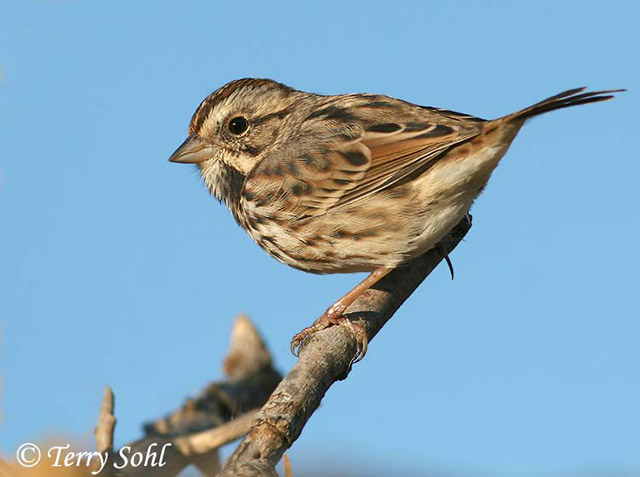
The Vesper Sparrow, meanwhile, wields a stubbier tail edged with white and a striking white eye-ring. In flight, Song Sparrows show off the broadness of their round-tipped wings and typically pump their tails.Ĭomparing the Song Sparrow to the similar-looking and even more widespread (though more warmth-loving) Savannah Sparrow, the latter has crisper, clearer streaking and commonly shows yellow in the stripe above the eye. (From Great Horned Owls to certain mammals such as Elk and Pumas, incidentally, Pacific Northwest varieties or subspecies of a broadly distributed animal often appear darker.) Pacific Northwest and Aleutian Song Sparrows usually appear substantially darker than Eastern, Southwestern, and Californian Coast birds – as the Cornell Lab of Ornithology’s All About Birds website notes, a function of higher concentrations of the pigment melanin, which may protect the sparrow’s plumage against accelerated degradation in these soggy climates. Males and females don’t exhibit markedly different plumage – Song Sparrows are monomorphic, in other words – though males tend to be bigger. Thick dark stripes edge the sparrow’s white or pale throat. Head, back, wings, and breast come streaked the breast markings often merge to a prominent blotch. The Song Sparrow’s salient physical features include its round head, heavy and stubby bill, and relatively long, rounded tail. The body mass of the species varies by 150% across its geographic range, according to the Cornell Lab of Ornithology’s Birds of North America. These parameters suggest the geographic variation within the species: The aforementioned Aleutian form grows significantly larger than the other Song Sparrows, and the California Coast form a bit smaller. They weigh roughly from half an ounce to 2 ounces. Song Sparrows range between about five and seven inches long, with a wingspan of seven to 9.5 inches. The Song Sparrow’s mellifluous voice, like its genetic character, doesn’t vary much across the species’ extensive distribution, but its physical appearance does: An Aleutian Song Sparrow from Alaska can appear to an untrained eye like a different sparrow species than a Song Sparrow from the East or coastal California.

It’s a frequent visitor to feeders, too, so a bird easy to get to know. This heavily streaked, medium-sized sparrow occupies much of North America at least part of the year, and during the breeding and nesting seasons in particular lives boldly up to its name.

All things considered, the Song Sparrow must rank among the most common and frequently seen native sparrows in the USA, though it undoubtedly goes unnoticed – or, at least, unrecognized – by the vast majority of Americans.


 0 kommentar(er)
0 kommentar(er)
